Where are gallstones. Gallstones: Understanding Symptoms, Causes, and Treatment Options
Where are gallstones located. What are the main symptoms of gallstones. What causes gallstones to form. How are gallstones diagnosed and treated. Who is at risk for developing gallstones. What complications can arise from untreated gallstones. How can gallstones be prevented.
The Gallbladder and Its Role in Digestion
The gallbladder is a small, pear-shaped organ located beneath the liver. Its primary function is to store and concentrate bile, a greenish-yellow fluid produced by the liver to aid in the digestion of fats. When we consume fatty foods, the gallbladder contracts and releases bile into the small intestine through a series of ducts.
Understanding the gallbladder’s role in digestion is crucial for comprehending how gallstones form and why they can cause problems. But what exactly are gallstones?
What Are Gallstones and How Do They Form?
Gallstones are solid, pebble-like deposits that form within the gallbladder. They can vary in size from as small as a grain of sand to as large as a golf ball. There are two main types of gallstones:
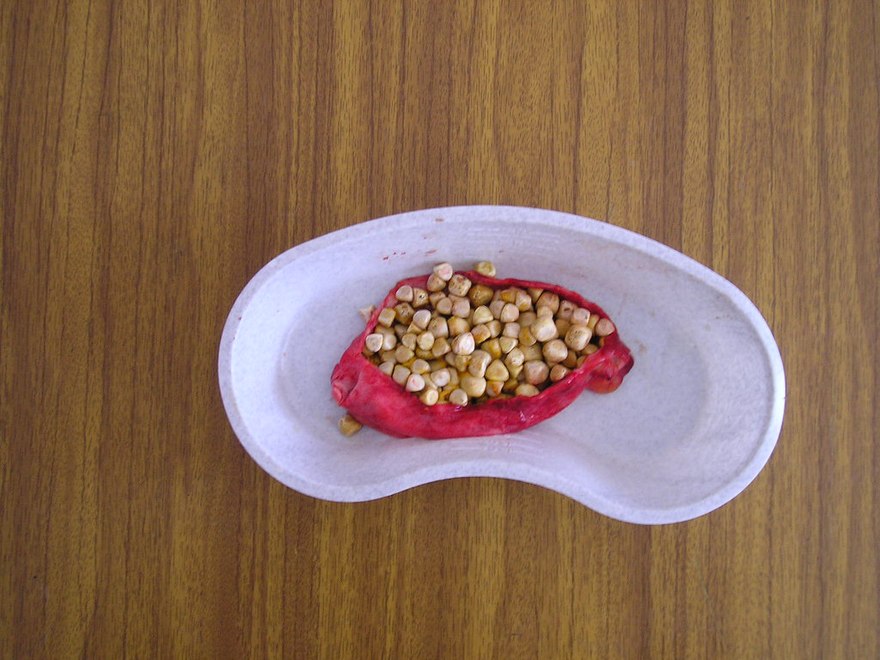
- Cholesterol stones: These are the most common type, accounting for about 80% of gallstones. They form when there’s an excess of cholesterol in the bile.
- Pigment stones: These are less common and are made up of bilirubin, a substance produced when red blood cells break down.
Gallstones develop when there’s an imbalance in the composition of bile. This can occur due to several factors:
- Too much cholesterol in the bile
- Too much bilirubin in the bile
- Not enough bile salts
- Incomplete or infrequent emptying of the gallbladder
Is there a way to prevent gallstones from forming? While not all risk factors can be controlled, maintaining a healthy weight, eating a balanced diet, and staying hydrated can help reduce the likelihood of developing gallstones.
Recognizing the Symptoms of Gallstones
Many people with gallstones remain asymptomatic for years. However, when gallstones cause blockages or inflammation, they can lead to a condition known as gallstone disease or cholelithiasis. The symptoms of gallstone disease can include:
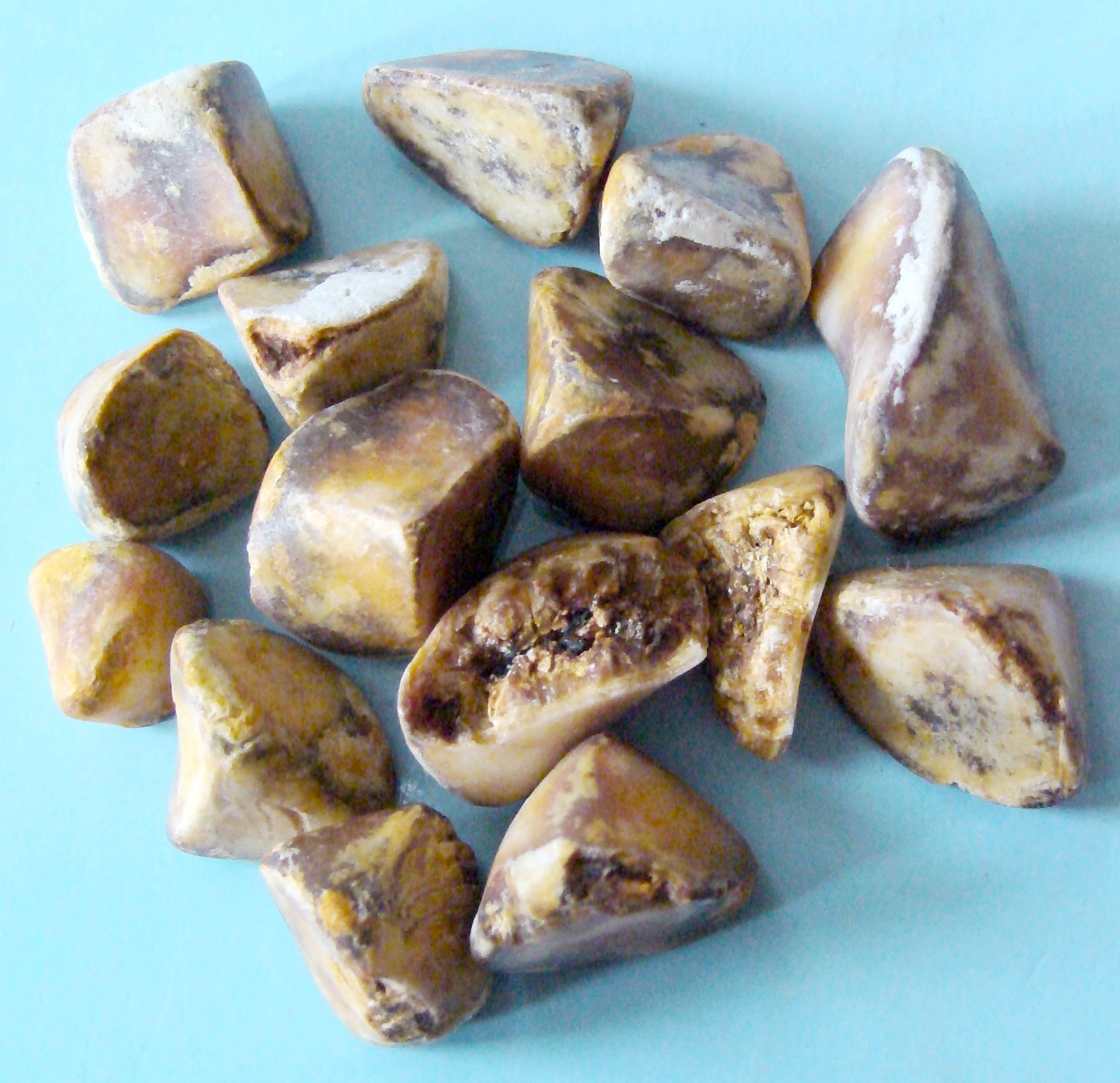
- Sudden, intense pain in the upper right abdomen or center of the abdomen
- Pain that radiates to the right shoulder or between the shoulder blades
- Nausea and vomiting
- Fever and chills
- Jaundice (yellowing of the skin and eyes)
- Clay-colored stools
These symptoms often occur after eating a fatty meal and can last from a few minutes to several hours. A gallstone attack, also known as biliary colic, typically lasts between 1 to 5 hours.
Can gallstone symptoms be mistaken for other conditions? Yes, gallstone symptoms can sometimes be confused with other digestive issues or even heart problems. It’s essential to seek medical attention for proper diagnosis and treatment.
Risk Factors for Gallstone Formation
While anyone can develop gallstones, certain factors increase the risk. These include:
- Age: The risk increases with age, particularly after 40
- Gender: Women are more likely to develop gallstones than men
- Obesity: Excess weight increases cholesterol in bile and reduces gallbladder emptying
- Rapid weight loss: Can cause the liver to secrete extra cholesterol into bile
- Pregnancy: Hormonal changes can increase cholesterol levels in bile
- Family history: Genetic factors may play a role
- Certain medical conditions: Such as diabetes, cirrhosis, or blood disorders like sickle cell anemia
- Certain medications: Including those containing estrogen
Understanding these risk factors can help individuals make informed decisions about their lifestyle and health choices. Are there any preventive measures that can be taken to reduce the risk of gallstones?
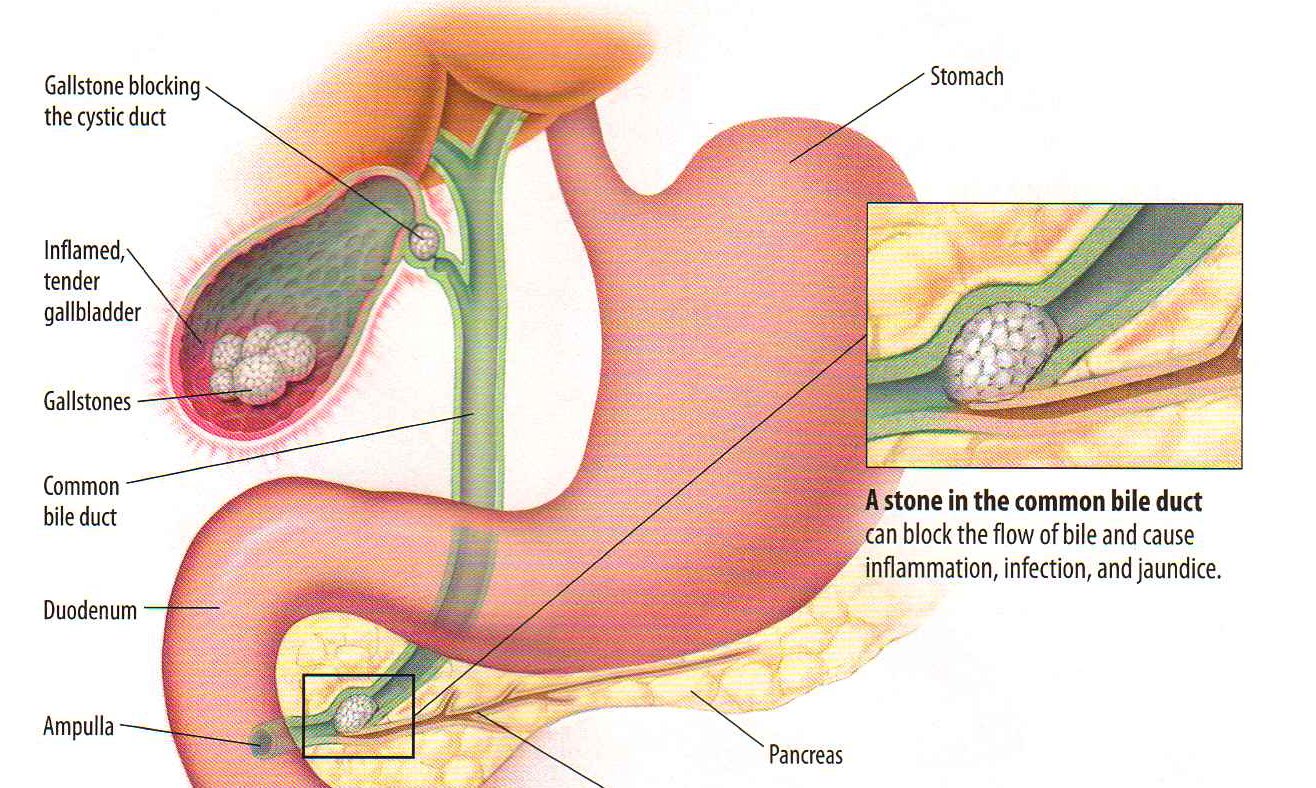
Diagnosing Gallstones: Tests and Procedures
When gallstones are suspected, healthcare providers may use several diagnostic tools to confirm their presence and assess their impact. Common diagnostic procedures include:
- Ultrasound: The most commonly used and often the first test performed
- CT scan: Provides detailed images of the gallbladder and surrounding structures
- HIDA scan: Uses a radioactive tracer to evaluate gallbladder function
- Blood tests: To check for signs of infection or obstruction
- Endoscopic retrograde cholangiopancreatography (ERCP): Combines X-rays with an endoscope to visualize the bile ducts
Early diagnosis is crucial for preventing complications and determining the most appropriate treatment. How accurate are these diagnostic methods in detecting gallstones?
The Importance of Timely Diagnosis
Prompt diagnosis of gallstones is essential for several reasons:
- It allows for early intervention, potentially preventing more severe complications
- It helps differentiate gallstone symptoms from other similar conditions
- It guides the selection of the most appropriate treatment option
- It can prevent unnecessary surgeries or treatments
Healthcare providers will consider the patient’s symptoms, medical history, and diagnostic test results to determine the best course of action.
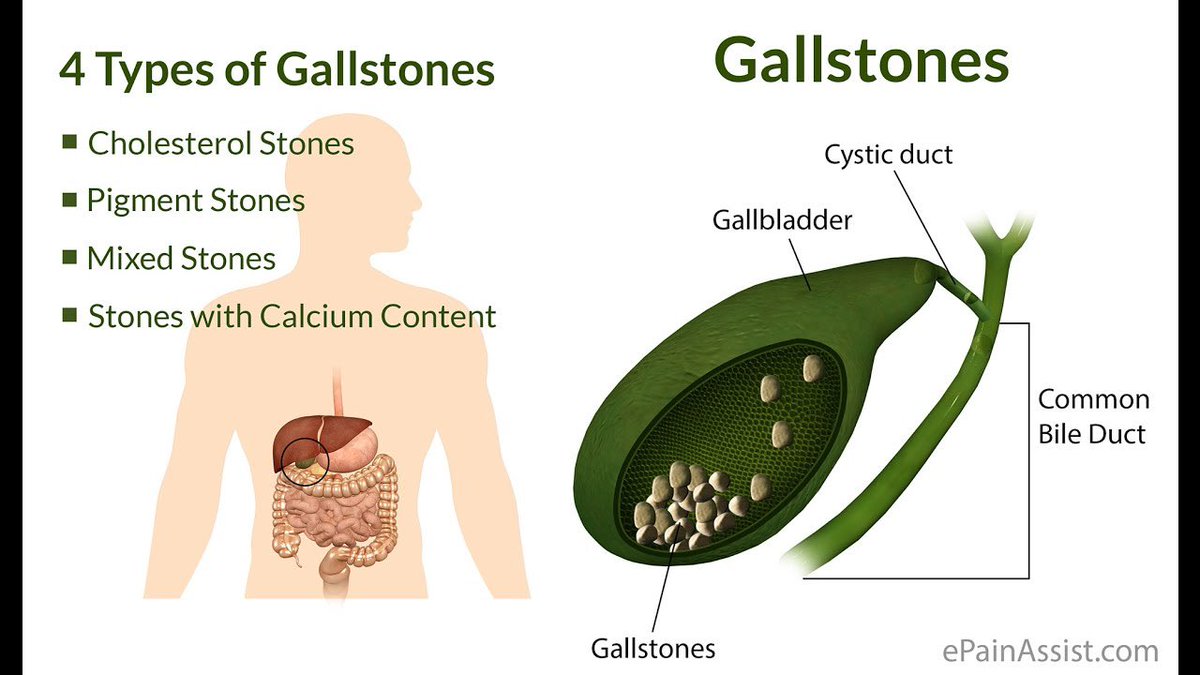
Treatment Options for Gallstones
The treatment for gallstones depends on the severity of symptoms and the presence of complications. Options include:
Watchful Waiting
For asymptomatic gallstones, a “wait and see” approach may be recommended. Many people with gallstones never experience symptoms and don’t require treatment.
Surgical Removal (Cholecystectomy)
The most common treatment for symptomatic gallstones is surgical removal of the gallbladder, known as cholecystectomy. This is typically done laparoscopically, resulting in smaller incisions and faster recovery times.
Medications
In some cases, medications may be used to dissolve small gallstones. However, this approach is less common and takes longer to be effective compared to surgery.
Lithotripsy
This procedure uses shock waves to break up gallstones. It’s less commonly used and is only suitable for certain types of gallstones.
What factors do doctors consider when recommending a treatment option for gallstones? The choice of treatment depends on various factors, including the size and location of the gallstones, the severity of symptoms, the patient’s overall health, and their personal preferences.
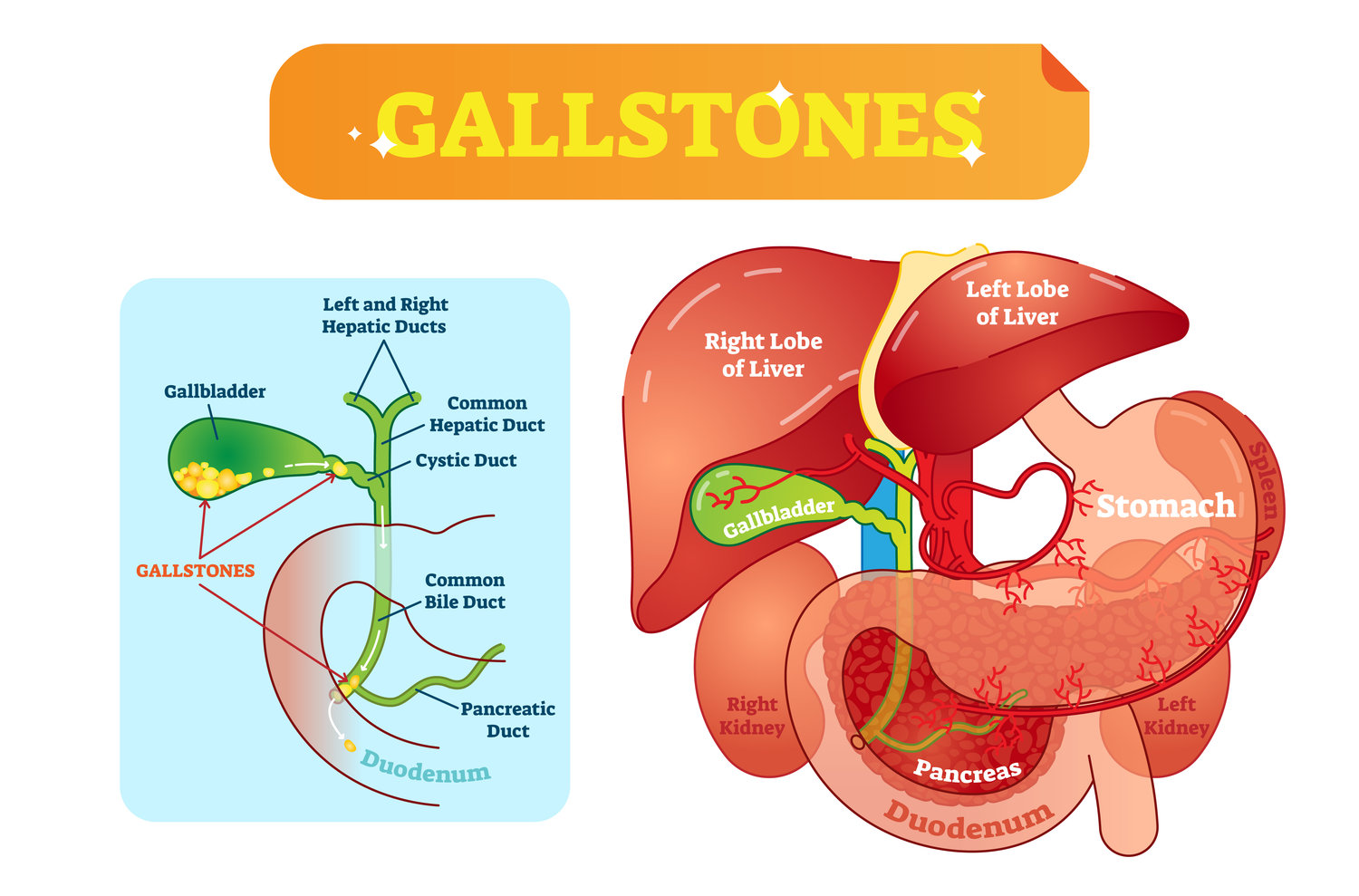
Living Without a Gallbladder: What to Expect
Many people worry about the implications of living without a gallbladder. However, it’s entirely possible to lead a normal, healthy life after gallbladder removal. Here’s what to expect:
- The liver will continue to produce bile, but it will flow directly into the small intestine instead of being stored in the gallbladder
- Some people may experience loose stools or diarrhea initially, but this usually resolves over time
- Dietary adjustments may be necessary, such as avoiding very fatty or spicy foods
- Most people can return to their normal activities within a week or two after laparoscopic surgery
Are there any long-term dietary restrictions after gallbladder removal? While most people can eat a normal diet after recovery, some may need to make minor adjustments to prevent digestive discomfort.
Potential Complications of Untreated Gallstones
While many gallstones remain asymptomatic, untreated symptomatic gallstones can lead to serious complications. These may include:
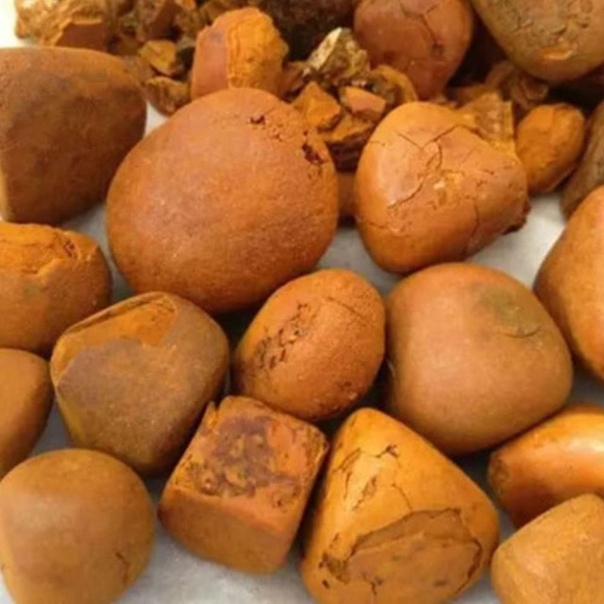
- Cholecystitis: Inflammation of the gallbladder
- Choledocholithiasis: Gallstones in the bile ducts
- Cholangitis: Infection of the bile ducts
- Pancreatitis: Inflammation of the pancreas
- Gallbladder cancer: A rare but serious complication
These complications can be serious and potentially life-threatening if left untreated. How quickly can complications develop from untreated gallstones? The timeline can vary greatly between individuals, emphasizing the importance of regular check-ups and prompt attention to symptoms.
Recognizing Emergency Situations
Certain symptoms indicate a medical emergency and require immediate attention:
- Severe abdominal pain that doesn’t subside
- High fever with chills
- Jaundice (yellowing of the skin and eyes)
- Persistent nausea and vomiting
- Dark urine and clay-colored stools
If you experience these symptoms, seek medical care immediately to prevent serious complications.
Preventing Gallstones: Lifestyle and Dietary Considerations
While not all gallstones can be prevented, certain lifestyle changes can help reduce the risk of their formation:

- Maintain a healthy weight: Obesity increases the risk of gallstones
- Avoid rapid weight loss: Crash diets can increase the risk of gallstone formation
- Eat a balanced diet: Include plenty of fruits, vegetables, and whole grains
- Stay hydrated: Drinking adequate water can help prevent bile from becoming too concentrated
- Exercise regularly: Physical activity can help maintain a healthy weight and promote good gallbladder health
- Limit high-fat foods: Excessive dietary fat can increase cholesterol in bile
Can dietary supplements help prevent gallstones? While some studies suggest that certain supplements may be beneficial, it’s important to consult with a healthcare provider before starting any new supplement regimen.
The Role of Diet in Gallstone Prevention
A healthy diet can play a significant role in preventing gallstones. Consider incorporating these elements into your diet:
- High-fiber foods: Help reduce cholesterol levels
- Healthy fats: Such as those found in olive oil and fish
- Lean proteins: Choose low-fat options to reduce overall fat intake
- Fruits and vegetables: Provide essential nutrients and fiber
- Coffee: Some studies suggest that moderate coffee consumption may reduce the risk of gallstones
Remember, while diet can play a role in prevention, it’s just one aspect of overall health. Regular check-ups and a healthy lifestyle are equally important in maintaining gallbladder health.

Gallstones – NHS
Gallstones are small stones, usually made of cholesterol, that form in the gallbladder. In most cases, they do not cause any symptoms and do not need to be treated.
Symptoms of gallstones
Gallstones often have no symptoms.
But if a gallstone becomes trapped in an opening (duct) inside the gallbladder, it can trigger a sudden, intense pain in your tummy that usually lasts between 1 and 5 hours.
This type of abdominal pain is known as biliary colic.
Some people with gallstones can also develop complications, such as inflammation of the gallbladder (cholecystitis).
This can cause:
- persistent pain
- yellowing of the skin and eyes (jaundice)
- a high temperature
When gallstones cause symptoms or complications, it’s known as gallstone disease or cholelithiasis.
The gallbladder
The gallbladder is a small pouch-like organ found underneath the liver. Its main purpose is to store and concentrate bile.
Bile is a liquid produced by the liver to help digest fats. It’s passed from the liver into the gallbladder through a series of channels known as bile ducts.
The bile is stored in the gallbladder and, over time, becomes more concentrated, which makes it better at digesting fats.
The gallbladder releases bile into the digestive system when it’s needed.
Causes of gallstones
Gallstones are thought to develop because of an imbalance in the chemical make-up of bile inside the gallbladder.
In most cases the levels of cholesterol in bile become too high and the excess cholesterol forms into stones.
Gallstones are very common. It’s estimated more than 1 in every 10 adults in the UK has gallstones, although only a minority of people develop symptoms.
You’re more at risk of developing gallstones if you’re:
- overweight or obese
- female (particularly if you have had children)
- 40 or over (the risk increases as you get older)
Treating gallstones
Treatment is usually only necessary if gallstones are causing:
- symptoms, such as tummy pain
- complications, such as jaundice or acute pancreatitis
In these cases, keyhole surgery to remove the gallbladder may be recommended.
This procedure, known as a laparoscopic cholecystectomy, is relatively simple to perform and has a low risk of complications.
It’s possible to lead a normal life without a gallbladder.
Your liver will still produce bile to digest food, but the bile will drip continuously into the small intestine, rather than build up in the gallbladder.
Outlook
Gallstone disease is usually easily treated with surgery.
Very severe cases can be life threatening, particularly in people who are already in poor health.
But deaths from gallstone disease are rare in the UK.
Video: gallstones
In this video, a doctor explains what gallstones are, the symptoms and the treatment options.
Media last reviewed: 1 May 2021
Media review due: 1 May 2024
Community content from HealthUnlocked
Page last reviewed: 19 November 2021
Next review due: 19 November 2024
Gallstones | Johns Hopkins Medicine
What are gallstones?
Gallstones form when bile stored in the gallbladder hardens into stone-like
material. Too much cholesterol, bile salts, or bilirubin (bile pigment) can
Too much cholesterol, bile salts, or bilirubin (bile pigment) can
cause gallstones.
When gallstones are present in the gallbladder itself, it is called
cholelithiasis. When gallstones are present in the bile ducts, it is called
choledocholithiasis. Gallstones that obstruct bile ducts can lead to a
severe or life-threatening infection of the bile ducts, pancreas, or liver.
Bile ducts can also be obstructed by cancer or trauma, but this is not
related to gallstones.
What causes gallstones?
Cholesterol stones are believed to form when bile contains too much
cholesterol, too much bilirubin, not enough bile salts, or when the
gallbladder does not empty as it should for some other reason.
Pigment stones tend to develop in people who have cirrhosis, biliary tract
infections, and hereditary blood disorders such as sickle cell anemia. The
causes of these stones are uncertain.
What are the symptoms of gallstones?
At first, most gallstones do not cause symptoms. However, when gallstones
However, when gallstones
become larger, or when they begin obstructing bile ducts, symptoms or
“attacks” begin to occur. Attacks of gallstones usually occur after a fatty
meal and at night. The following are the most common symptoms of
gallstones. However, each individual may experience symptoms differently.
Symptoms may include:
Steady, severe pain in the upper abdomen that increases rapidly and
may last from 30 minutes to several hoursPain in the back between the shoulder blades
Pain in the right shoulder
Nausea
Vomiting
Fever
Chills
Jaundice. A yellowing of the skin or eyes.
Abdominal bloating
Intolerance of fatty foods
Belching or gas
Indigestion
People who experience the following symptoms should consult their doctor
immediately:
Some people with gallstones do not have any symptoms. These stones are
These stones are
called “silent stones,” because they do not interfere with the function of
the gallbladder, liver, or pancreas, and do not require treatment in most
cases.
The symptoms of gallstones may resemble other conditions or medical
problems, such as heart attack, appendicitis, ulcers, irritable bowel
syndrome, hiatal hernia, pancreatitis, or hepatitis. Always consult your
health care provider for a diagnosis.
Who is affected by gallstones?
The following are suggested risk factors for gallstones:
Obesity.
Obesity is a major risk factor for gallstones, especially in women.Estrogen.
Excess estrogen from pregnancy, hormone replacement therapy, or
birth control pills appears to increase cholesterol levels in bile
and decrease gallbladder movement, both of which can lead to
gallstones.Ethnicity.

Native Americans have the highest rates of gallstones in this
country and seem to have a genetic predisposition to secrete high
levels of cholesterol in bile.Gender.
Women are twice as likely to develop gallstones than men.Age.
People over 60 are more likely to develop gallstones than younger
people.Cholesterol-lowering drugs.
Drugs that lower cholesterol in blood can actually increase the
amount of cholesterol secreted in bile, which, in turn, increases
the risk of gallstones.Diabetes.
People with diabetes generally have high levels of fatty acids,
called triglycerides, which increase the risk for gallstones.Rapid weight loss.
As the body metabolizes fat during rapid weight loss, it causes the
liver to secrete extra cholesterol into bile, which can cause
gallstones.
Fasting.
Fasting decreases gallbladder movement, which causes the bile to
become overconcentrated with cholesterol.
How are gallstones diagnosed?
In some cases, asymptomatic gallstones are discovered by
accident–during testing for another diagnosis. However, when pain
persists or happens again and again, your health care provider may want
to conduct a complete medical history and physical examination, in
addition to the following diagnostic procedures for gallstones:
Ultrasound.
A diagnostic technique that uses high-frequency sound waves to
create an image of the internal organs.Cholecystography.
X-ray that shows the flow of contrast fluid through the
intestines into the gallbladder.Blood tests.

These look for signs of infection, obstruction, jaundice,
and/or pancreatitis.
Computed tomography scan (also called a CT or CAT scan).
A diagnostic imaging procedure that uses a combination of
X-rays and computer technology to produce horizontal, or axial,
images (often called slices) of the body. A CT scan shows
detailed images of any part of the body, including the bones,
muscles, fat, and organs. CT scans are more detailed than
general X-rays.
Endoscopic retrograde cholangiopancreatography (ERCP).
A procedure that involves inserting an endoscope (viewing tube)
through the stomach and into the small intestine. A special dye
injected during this procedure shows the ducts in the biliary
system.Sphincterotomy.
Opening the muscle sphincter, a ring of muscle around a natural
opening that acts like a valve, wide enough so stones can pass
into the intestine.
Treatment for gallstones
Specific treatment for gallstones will be determined by your health
care provider based on:
Your age, overall health, and medical history
Extent of the condition
Your tolerance of specific medicines, procedures, or therapies
Expectations for the course of the condition
Your opinion or preference
If the gallstones cause no symptoms, treatment is usually not
necessary. However, if pain persists, treatment may include:
Gallbladder removal (cholecystectomy).
Once removed, the bile flows directly from the liver to the
small intestine. Side effects of this may include diarrhea
because the bile is no longer stored in the gallbladder.Oral dissolution therapy.

Drugs made from bile acid are used to dissolve the stones.Methyl-tert-butyl ether.
A solution injected into the gallbladder to dissolve stones.Extracorporeal shockwave lithotripsy (ESWL).
A procedure that uses shock waves to break stones up into tiny
pieces that can pass through the bile ducts without causing
blockages.Contact dissolution therapy.
An experimental procedure that involves injecting a drug
directly into the gallbladder to dissolve the stones.
symptoms and when to see a doctor
Gallstone disease (GSD) is the formation of stones (calculi) in the gallbladder and bile ducts. Gallstones are hardened deposits of digestive fluid that most commonly form in your gallbladder. Your gallbladder is a small, pear-shaped organ on the right side of your abdomen, just below your liver.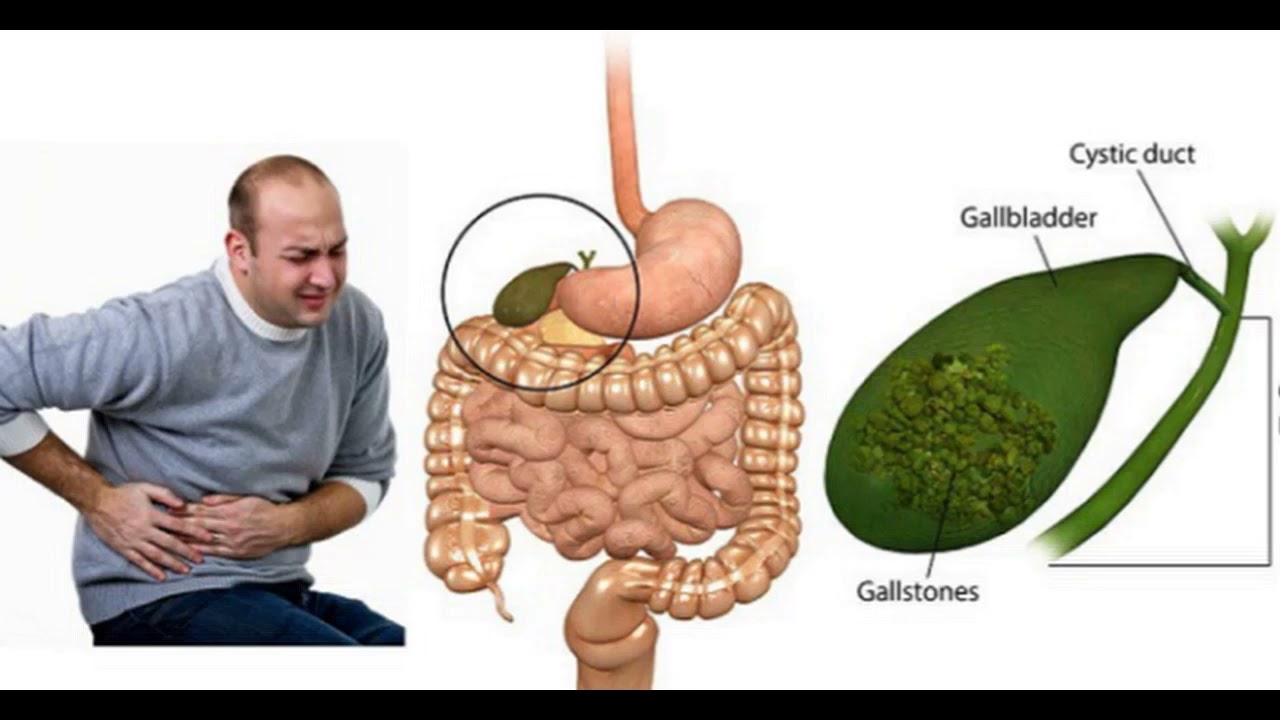 The gallbladder contains a digestive fluid called bile, which is secreted into the small intestine to aid in the digestion of food.
The gallbladder contains a digestive fluid called bile, which is secreted into the small intestine to aid in the digestion of food.
Gallbladder stones range in size from a grain of sand to a golf ball. Some people develop only one gallstone, while others develop many small stones at the same time.
The presence of stones carries the risk of developing dangerous conditions and severe complications.
Symptoms
Gallstones often cause no signs or symptoms. If a gallstone gets stuck in the duct and causes a blockage, the following symptoms develop:
- Sudden and rapidly increasing pain in the center of the abdomen, just below the sternum, on the right
- Pain in the back between the shoulder blades
- Right shoulder pain
- Nausea or vomiting
- Pain associated with gallstone disease can last from several minutes to several hours
When to see a doctor
Make an appointment with your doctor if you have any signs or symptoms that worry you.
Read about the diagnosis and treatment of cholelithiasis at the link.
Seek care right away if you develop signs and symptoms of a serious complication associated with gallstones, for example:
- Abdominal pain so severe that you cannot sit still or find a comfortable position
- Yellowing of the skin and whites of the eyes (jaundice)
- High fever with chills
Number for calling an ambulance in Moscow – 103
Causes of cholelithiasis
It is unclear what causes gallstones. Doctors believe that gallstones can occur in the following cases:
Your bile contains too much cholesterol . Normally, your bile contains enough chemicals to dissolve the cholesterol secreted by your liver. But if your liver secretes more cholesterol than bile can dissolve, the excess cholesterol can turn into crystals and eventually stones.
Your bile contains too much bilirubin . Bilirubin is a chemical produced when red blood cells are broken down in the body. Under certain conditions, the liver produces too much bilirubin, including cirrhosis of the liver, biliary tract infections, and certain blood disorders. Excess bilirubin contributes to the formation of gallstones.
Bilirubin is a chemical produced when red blood cells are broken down in the body. Under certain conditions, the liver produces too much bilirubin, including cirrhosis of the liver, biliary tract infections, and certain blood disorders. Excess bilirubin contributes to the formation of gallstones.
Your gallbladder is not emptying properly. If the gallbladder does not empty completely or often enough, the bile can become very concentrated, which promotes the formation of gallstones.
Types of gallstones
Types of gallstones that can form in the gallbladder include:
Cholesterol stones in the gallbladder. The most common type of gallstones, called cholesterol gallstones, are often yellow in color. These gallstones are made up primarily of undissolved cholesterol, but may contain other components.
Pigment stones in the gallbladder. These dark brown or black stones form when your bile contains too much bilirubin.
Risk factors
Factors that may increase the risk of gallstones include:
- Female sex
- Age 40 and over
- Overweight or obese
- Sedentary
- Pregnancy
- High fat diet
- High cholesterol diet
- Low fiber diet
- Family history of gallstones
- Diabetes
- Presence of certain blood disorders such as sickle cell anemia or leukemia
- Very fast weight loss
- Taking medications containing estrogen, such as oral contraceptives or hormone therapy drugs.
- Liver disease
Complications
Complications of gallstones may include:
Inflammation of the gallbladder . A gallstone lodged in the neck of the gallbladder can cause inflammation of the gallbladder (cholecystitis). Cholecystitis can cause severe pain, peritonitis.
Blockage of the common bile duct . Gallstones can block the channels (ducts) that carry bile from the gallbladder or liver to the small intestine. This can lead to severe pain, jaundice, and bile duct infection.
This can lead to severe pain, jaundice, and bile duct infection.
Obstruction of the pancreatic duct . The pancreatic duct is a tube from the pancreas and joins the common bile duct just before entering the duodenum. The pancreatic juices that aid digestion pass through the pancreatic duct.
A gallstone can cause blockage of the pancreatic duct, which can lead to inflammation of the pancreas (pancreatitis). Pancreatitis causes severe, persistent abdominal pain and usually requires hospitalization. Severe forms of pancreatitis often end in the death of the patient.
Gall bladder cancer . People with gallstones have an increased risk of developing gallbladder cancer.
Prevention of gallstones
You can reduce the risk of gallstones:
Do not skip meals . Try to stick to your regular meal times every day. Skipping meals or fasting can increase your risk of gallstones.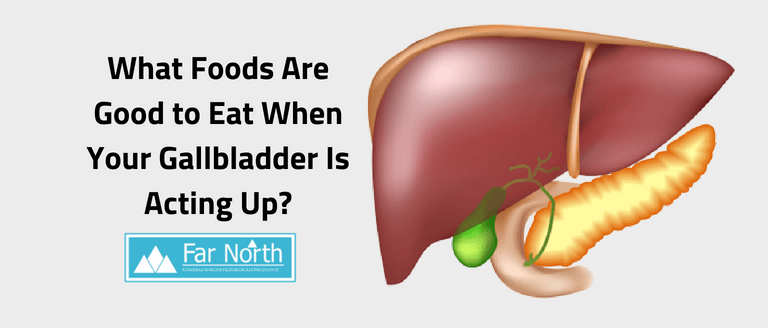
Lose weight slowly . If you need to lose weight, take your time. Rapid weight loss can increase the risk of gallstones.
Eat more high fiber foods . Include more fiber-rich foods in your diet, such as fruits, vegetables, and whole grains.
Maintain a healthy weight . Obesity and overweight increase the risk of gallstones. Work towards a healthy weight by cutting calories and increasing physical activity. Once you reach a healthy weight, work on maintaining it by continuing to eat a healthy diet and keep exercising.
causes, symptoms and treatment at the FSCC FMBA
Gallbladder stones: causes, symptoms and treatment at the FSCC FMBA
ATTENTION! From July 16, the entrance for outpatients will change. Read more
- Main page org/ListItem”> Diseases
- Gallstones
Make an appointment with a doctor
Sign up for hospitalization
Make an appointment for hospitalization
Contents
Reading time: 6 min., 7 sec.
Stones in the gallbladder (cholelithiasis) – a disease of the gallbladder, which is accompanied by the formation of stones. Stones in the bladder disrupt the process of digestion, interfere with the normal outflow of bile, and cause acute conditions such as colic.
Gallstones are solid masses of various sizes, shaped like rounded stones. They are formed during the hardening of bile, caused by an excess of cholesterol, bile salts, bilirubin.
The gallbladder is a small sac-like organ located under the liver. The main functions are the accumulation and concentration of bile.
In turn, bile is a fluid that is synthesized in the liver. Bile consists of acids, pigments, enzymes. Bile is involved in the breakdown of fats.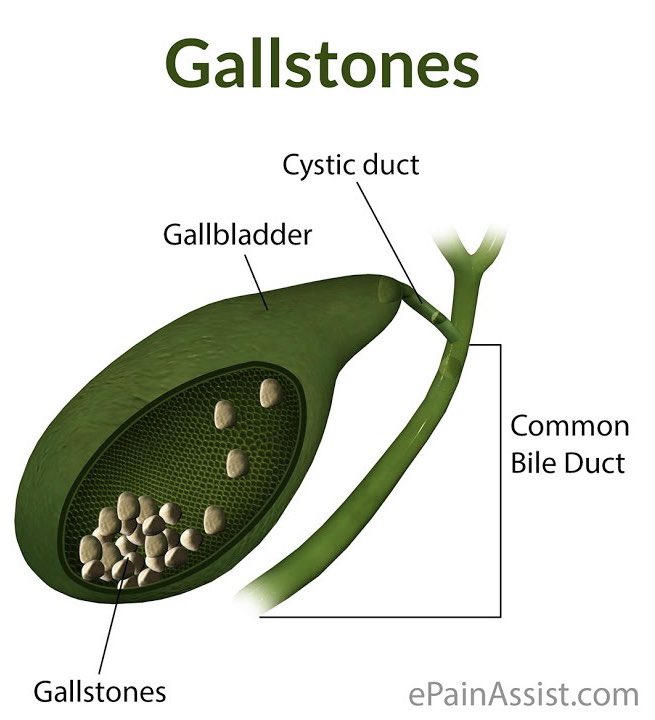 The liver, gallbladder, duodenum and pancreas are connected by a duct system.
The liver, gallbladder, duodenum and pancreas are connected by a duct system.
Types of gallstones
- Cholesterol stones. Yellow-green in color. Predominantly formed in women and obese people. The share of cholesterol stones accounts for up to 80%.
- Pigment stones. Black-brown in color. Formed with concomitant diseases of the liver, cirrhosis, inflammation of the bile ducts.
Symptoms
Many people with gallstones do not experience symptoms. Complaints arise during the formation of large stones, an increase in their number, as a result, the development of complications. Complications include inflammation, infection, impaired bile flow after duct closure.
Gallstone colic is a key sign of gallstones. The pain occurs suddenly, quickly reaches a maximum. Colic is characterized by increasing pain in the right hypochondrium. The duration is several hours. Colic is provoked by the intake of fatty foods. Characterized by the following features:
Colic is provoked by the intake of fatty foods. Characterized by the following features:
- Sudden, increasing pain in the upper right abdomen
- Severe pain in the center below the sternum
- Right shoulder pain
- Increased pain when eating fatty foods
- Nausea or vomiting
- Fever
- Jaundice
- Discolored chair (clay color)
Causes of cholelithiasis
Responsible for the development of gallstones:
- Increased content of cholesterol in bile. High cholesterol levels in the blood lead to high levels of cholesterol in the bile. Excess cholesterol occurs with diabetes, obesity. Lecithin and acids, aimed at dissolving cholesterol, cannot cope with the splitting process. Cholesterol turns into crystals.
- Excess bilirubin. Bilirubin is a breakdown product of red blood cells. An increase in the synthesis of bilirubin is associated with cirrhosis, infection, and blood pathology.
 Bilirubin as well as cholesterol provokes the formation of stones.
Bilirubin as well as cholesterol provokes the formation of stones. - Impaired contractility of the gallbladder. With incomplete emptying, part of the bile remains in the bladder, concentrates in the form of a precipitate, then crystallizes with the formation of stones
Risk factors:
- Female
- History of cholelithiasis
- Age over 40
- Overweight, obesity
- Metabolic disorders (diabetes mellitus)
- Reduced physical activity
- Unbalanced nutrition
- Pregnancy
- Diseases of the liver
Diagnostics
Diagnosis requires a comprehensive examination. The attending physician conducts a survey, determines the main complaints, the history of the development of symptoms, finds out what provokes the appearance of complaints. Then the doctor conducts an examination, palpates the abdomen in different departments. The survey includes:
- Laboratory tests
- Instrumental diagnostics
- Endoscopic methods
Laboratory tests
If gallstone disease is suspected, a general and biochemical blood test is performed. Assess the performance of the liver and biliary tract.
Assess the performance of the liver and biliary tract.
Instrumental diagnostics
- Ultrasound is a highly effective non-invasive imaging modality. The method is based on the reflection of ultrasonic waves from internal organs and image formation.
- Computed tomography. Allows you to visualize gallstones, as well as complications caused by gallstone disease. The method is based on X-ray radiation.
- Magnetic resonance imaging. Highly informative method in relation to the detailed image of the structures of the liver, gallbladder, biliary tract, as well as inflammation. MRI is based on electromagnetic waves interacting with radio frequency radiation.
- Cholecystography. The patient is injected intravenously with a contrast agent, then an x-ray is taken. The image accurately determines the condition of the biliary tract, the site of obstruction, the presence of inflammation.
Endoscopic methods
- Retrograde cholangiopancreatography is the endoscopic procedure of choice for stone detection.
 This procedure allows you to remove intraductal stones using a duodenoscope, as well as inject a contrast agent for subsequent x-rays.
This procedure allows you to remove intraductal stones using a duodenoscope, as well as inject a contrast agent for subsequent x-rays.
Complications
- Cholecystitis is the most common complication. Occurs when a stone enters the cystic duct. Bile, which stagnates in the bladder, causes it to become inflamed. Cholecystitis is accompanied by intense pain, fever.
- Choledocholithiasis is characterized by the movement of a stone into the common bile duct, with an increased risk of damage to both the gallbladder and the liver. Closure of the common bile duct is accompanied by pain, development of obstructive jaundice, infection
Treatment of the gallbladder in the Federal Scientific and Practical Center
Treatment depends on the clinical picture, the intensity of symptoms, concomitant diseases. The goal of treatment is to relieve symptoms, prevent complications and prevent recurrence of the pathology.
Treatment of the gallbladder includes:
- Prescribing drugs
- Surgery
- Extracorporeal lithotripsy
- Endoscopic Stenting
- Lifestyle correction (elimination of excess body weight, proper nutrition)
Medical therapy
Prescribing drugs has two goals: preventing the formation of new and dissolving existing stones. Medicines are effective for small, non-calcified cholesterol stones in a normally functioning gallbladder. The duration of the course is 12 months and longer if necessary.
Laparoscopic surgery
In cholelithiasis, which is accompanied by symptoms, frequent colic, removal of the gallbladder (laparoscopic cholecystectomy) is indicated.
Surgeons of the FSCC FMBA of Russia perform the operation through one access – an advanced type of surgical removal of the gallbladder. The technique consists in creating one incision near the navel, while classical laparoscopy involves four incisions-ports.
Minimally invasive ICG fluorescent navigational laparoscopy is the method of choice for surgical treatment at the Federal Research and Clinical Center. It is based on the use of a fluorescent contrast agent, which is administered intravenously to the patient before surgery. Thanks to the contrast agent, the visualization of anatomical structures, blood vessels, and bile ducts improves. The use of ICG technology has been proven to reduce the risk of intraoperative complications, reduce the patient’s stay in the hospital and the recovery period.
Endoscopic retrocholangiopankeratography (ERCP)
ERCP under the control of the SPY GLASS DC imaging system is a modern method for the diagnosis and treatment of cholelithiasis. The SpyGlass DC device is an ultra-thin endoscope with a miniature camera fixed on it, which is passed through the channel of the main endoscope. An advanced device determines the cause of the disease with high accuracy, allows visually controlled crushing of large stones.
ERCP, along with lithotripsy, is the method of choice in the presence of contraindications to surgical treatment.
Extracorporeal shock wave lithotripsy
Extracorporeal lithotripsy is an alternative to surgery. Under the influence of high-frequency shock waves, stones in the gallbladder can be crushed and destroyed.
Prophylaxis
Following simple recommendations reduces the risk of developing gallstones:
- Regular physical activity
- Maintenance of optimal weight, if overweight, gradual reduction
- Complete, balanced diet, eating at the same time
- Eating high fiber foods
Information verified by an expert
This article is informational and is not intended for self-diagnosis and self-treatment. If signs of discomfort appear, you should contact your doctor.
Before being admitted to our Center, we recommend that you get an online consultation with a doctor without leaving your home. This will help prepare for hospitalization, collect the necessary package of documents. Convenient and fast!
This will help prepare for hospitalization, collect the necessary package of documents. Convenient and fast!
Read more
Surgery, Liver surgery, Bariatric surgery
Zlobin Alexander Ivanovich
Doctor – surgeon
more than 15 years
Surgeon
- Abdominal surgery
- Bariatrics
details
Experience
over 15 years
Tuesday, July 18, 15:00
Book this time
Show schedule
Hide schedule
Bariatric surgery
2 800 ₽
Surgery, Liver surgery
2 800 ₽
Tuesday, July 18, 15:00
Book this time
Show schedule
Hide schedule
Endoscopy
Dmitry V. Sazonov
Head of the Endoscopy Department. Doctor – endoscopist
Experience
over 28 years
Head of Endoscopy Department. Doctor – endoscopist
Doctor – endoscopist
- Endoscopic diagnosis of the norm and diseases of the respiratory system, gastrointestinal tract, using vital and virtual chromoscopy (NBI, BLI + LCI, FICE, i-Scan)
- Magnifying endoscopy, biopsy (Esophagogastroduodenoscopy, Colonoscopy with examination of the small intestine. Epipharyngolaryngoscopy. Bronchoscopy)
- Surgical endoscopy: endoscopic removal of neoplasms, including large-sized (benign, malignant) organs of the gastrointestinal tract (Polypectomy,
more details
Experience
over 28 years
Monday, July 24, 13:15
Book this time
Show schedule
Hide schedule
2 800 ₽
Monday, July 24, 13:15
Book this time
Show schedule
Hide schedule
Oncosurgery, Surgery, Liver Surgery
Yuri Viktorovich Ivanov
Head of the surgical department.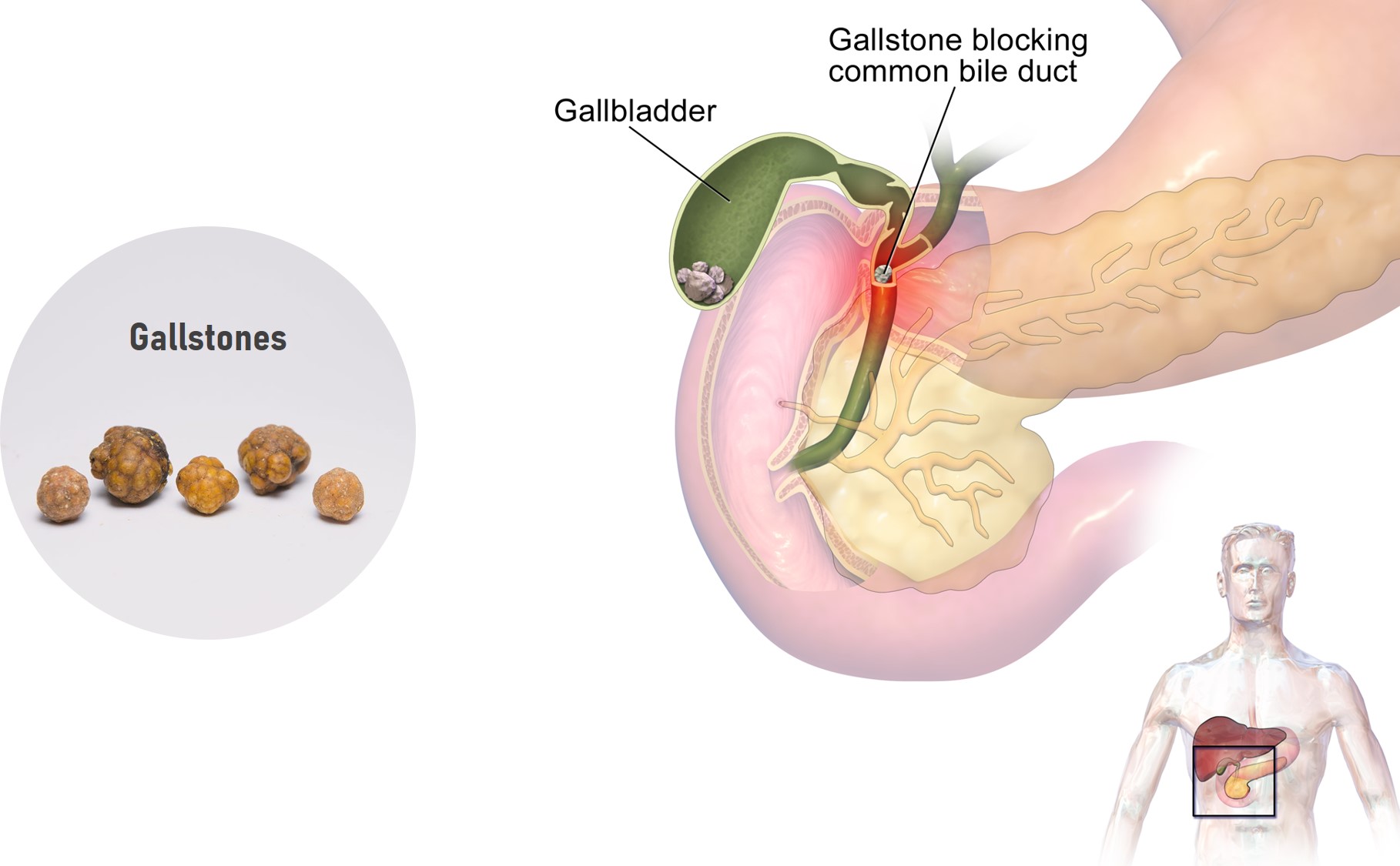


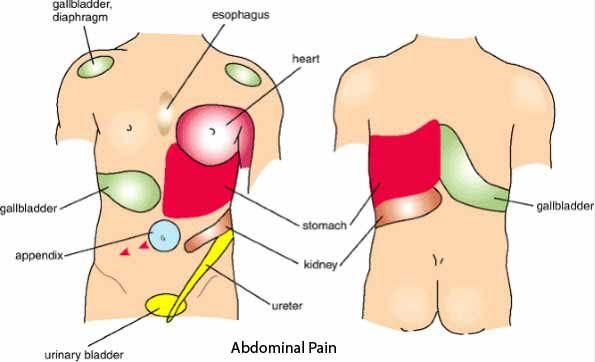



 Bilirubin as well as cholesterol provokes the formation of stones.
Bilirubin as well as cholesterol provokes the formation of stones. This procedure allows you to remove intraductal stones using a duodenoscope, as well as inject a contrast agent for subsequent x-rays.
This procedure allows you to remove intraductal stones using a duodenoscope, as well as inject a contrast agent for subsequent x-rays.